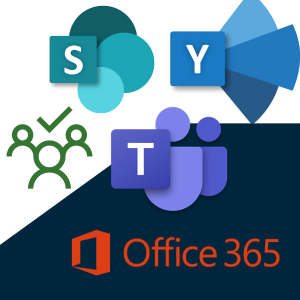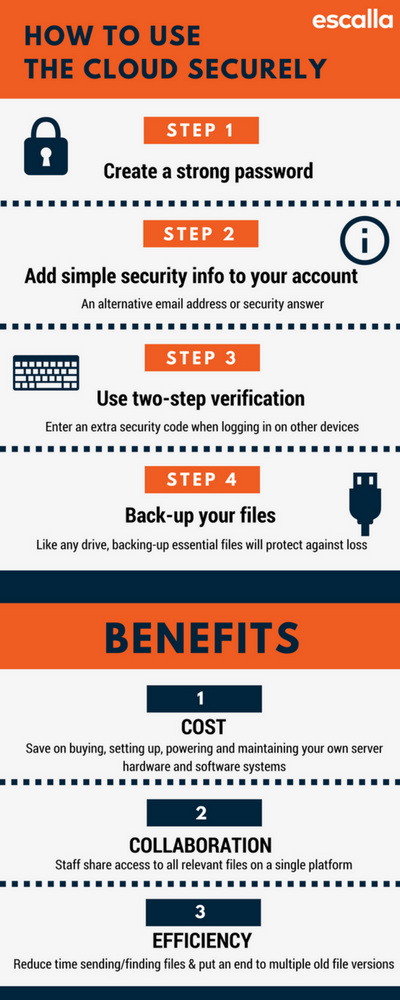What exactly is digital leadership?
Effective digital leadership could be one of the biggest challenges facing your business today.
Don’t be fooled by the term. While a bit of a buzzword, what we’re talking about is being a good manager or supervisor in 2019 and beyond.
It means maintaining your ability to manage your teams, inspire your staff and keep pushing your business forward through the current changes in technology and culture.
But what does digital leadership look like? How can you become a good digital leader? And can we just ignore it and get on with our day jobs?
Welcome to the ‘digital age’
If you want to know what the digital age will look like, step outside. Or maybe just glance at your phone. It’s here.
Cutting edge technology has never been cheaper or easier to use. Everywhere you look, you’ll see connected people doing the things that a decade ago we thought were impossible.
Every day we are having to adjust to new ways of communicating, new ways of socialising, creating, and having fun. And the resulting wave of ‘doing things differently’ is flooding our industries at the most basic levels.
Sure, we can all look back fondly to the time when a computer was just a box on a desk. But the truth is, the world has moved on. And today you’re capable…rather, expected to do more.
Point 1: Recognising and embracing the culture shift
Our changing world
Digitalisation in life has shifted expectations to easier, more convenient ways of doing everything.
Everyday tasks which took time now happen instantly. ‘What ifs’ now ‘are’.
And the same expectations are carried by the people who work for you, and with you, at your business.
As a digital leader, it’s your job to recognise how society is changing, and cultivate the same values, expectations and culture within your organisation.
That doesn’t mean training everyone in your customer services team to become web developers. It might just mean adopting faster communication, easier meetings or making your software accessible on a wider range of devices.
It means recognising that things which your company used to be good at might be losing their value; and adapting to suit. Maybe you have a room of gifted phone operators – but your customers want web-based chat? Maybe flexible working would help motivate your workforce, but you don’t have the software to host reliable online meetings?
Essentially, embracing the changing world means thinking about what your teams can do, what your customers want, and then being the leader who can bring them together so it works for your business.
Point 2: Overcoming fear of the cloud
‘Who or what is the cloud? Can we trust it? What if it turns against us? Or blows away in the wind?’
Cloud computing is the cornerstone of the modern computing age.
But despite a decade of massive growth, fear of cloud technology remains a big stumbling block for leaders across industries - still cautious of floating their most business-critical data up into the ethereal mass.
And, in some ways, it’s hardly surprising. I mean…‘cloud’ computing: Distant? Transient? Fragile? Shooting out electricity and dropping its contents out all over the floor? If the name isn’t enough to inspire rock-solid confidence, the concept could keep you in the basement.
Despite some public misconceptions, though, cloud-based data storage is already being used safely and widely across the world. Every time you store your details, fill-in forms or manage accounts online, or use remote technology of any kind, there’s a good chance your data is evaporating (in a good way).
The truth is, by avoiding cloud-based working, it could be negatively influencing your major decisions, derailing your strategy and costing your organisation money.
The answer to safe cloud use is taking the same precautions as you would with anything else ‘digital’ (including your hard drive, phone or a USB stick).
Point 3: Bringing your technology and teams together
Digital leadership – above everything else – is about how you introduce your teams to new ways of working.
Whether you have a young team of Google-wannabes, or a handful of near-pensioners, changing the way people work will always be challenging.
Avoid new-tech overload
It’s ironic, that while ultra-fast, ultra-capable platforms are pushing to change the way your organisation works, it’s often this speed and disruption caused by the technology that flatlines your communications strategy.
So often, users feel like they’re bracing themselves against a torrent of new tools and platforms – expected to begin using them instantly, without enough time or training.
This pressure to adopt new IT skills can happen weekly, even daily (think back to the last time your organisation stuck a new tool on your desktop and told everyone to ‘start using it’).
Users barely have time to reflect on a new program, not to mention master it, before the next one is thrown at them.
The result? Users switch off. Often literally. No longer capable or interested in yet another tool. So they club together and collectively turn their backs on what they don’t understand.
The answer, of course, is effective strategy. It’s easy to get excited about a new tool or app – and want everyone to start using it TODAY! But recognise the tools that will help your users in the long-term, them give them the time and space to learn how to use them well.
Think about WHY, as well as HOW
New digital tools and platforms usually feel intuitive to most users – even if only through personal online banking or a bit of shopping. But often, what traps users and organisations isn’t understanding how to use new technology, but why.
Communicating the specific benefits of any new technology to your users is a key responsibility of a digital leader: Why is this new tool replacing the one before it? What benefit will it have for our business? Why is it the best thing for the job?
If users know the answers to these questions, they will be much more open to taking the time and effort to changing the way they work. If you don’t have the answers, why are you introducing the technology at all?
Effective digital leadership means investment (both time and money) in educating users about the real BENEFITS of new collaborative technologies. And it’ll inspire an openness to change.
Recognising when things don’t work
Good digital leadership is not only about recognising the benefits of new technology. You also need to recognise when new software or platforms fail to deliver.
‘Digital’ is a very competitive market; and like the array of apps marketed to phone-users as ‘life changing’, not everything delivers real benefits or relevance for business needs.
You need to be able to quickly recognise where that’s the case and be prepared to acknowledge openly where something hasn’t worked.
This means listening to and learning from your own users and their experience.
As a digital leader, you must be able to ask why a tool or technology isn’t working. There are a number of tools which carry the ‘new’, ‘digital’, ‘collaborative’ labels, which are badly made, frustrating and will probably have faded away within a few years.
If things aren’t working, don’t assume it’s because your staff aren’t trying hard enough. We need to apply the same focus and sensitivity to our users as we do to our customers.
Summary
Digital leadership: making it work
Digital leaders aren’t a new breed. Effective digital leadership looks like traditional management, but one which embraces a digital culture AND gives staff the right level and type of support.
Digital leadership is not just about buying the latest technology then sticking your staff on a training course. It’s about integrating useful and managed strategies that will make the working experience easier for everyone.
It’s about thinking which digital tools will save you time, money and energy.
It’s about communicating with your users at every stage – letting them know how to adopt new systems, and – more importantly – why they’re being asked to.
And it’s about using effective, modern training methods.
Essentially, a good digital leader must master a simple contradiction: able to push users out of their comfort zones to learn the new skills that are vital for the ongoing survival of your business; yet simultaneously create environments that are as comfortable and supportive as possible.
As the new digital platforms continue to rise, it seems unavoidable that some leaders will remain standing, but others will fall through the cracks. Today is about learning the skills and approaches to help you adapt and survive as leaders in the digital age.
escalla
escalla utilise the latest training methods and platforms for today’s users and digital leaders. We are digital transformation experts, specialising in multi-stage Office 365 training and support.





